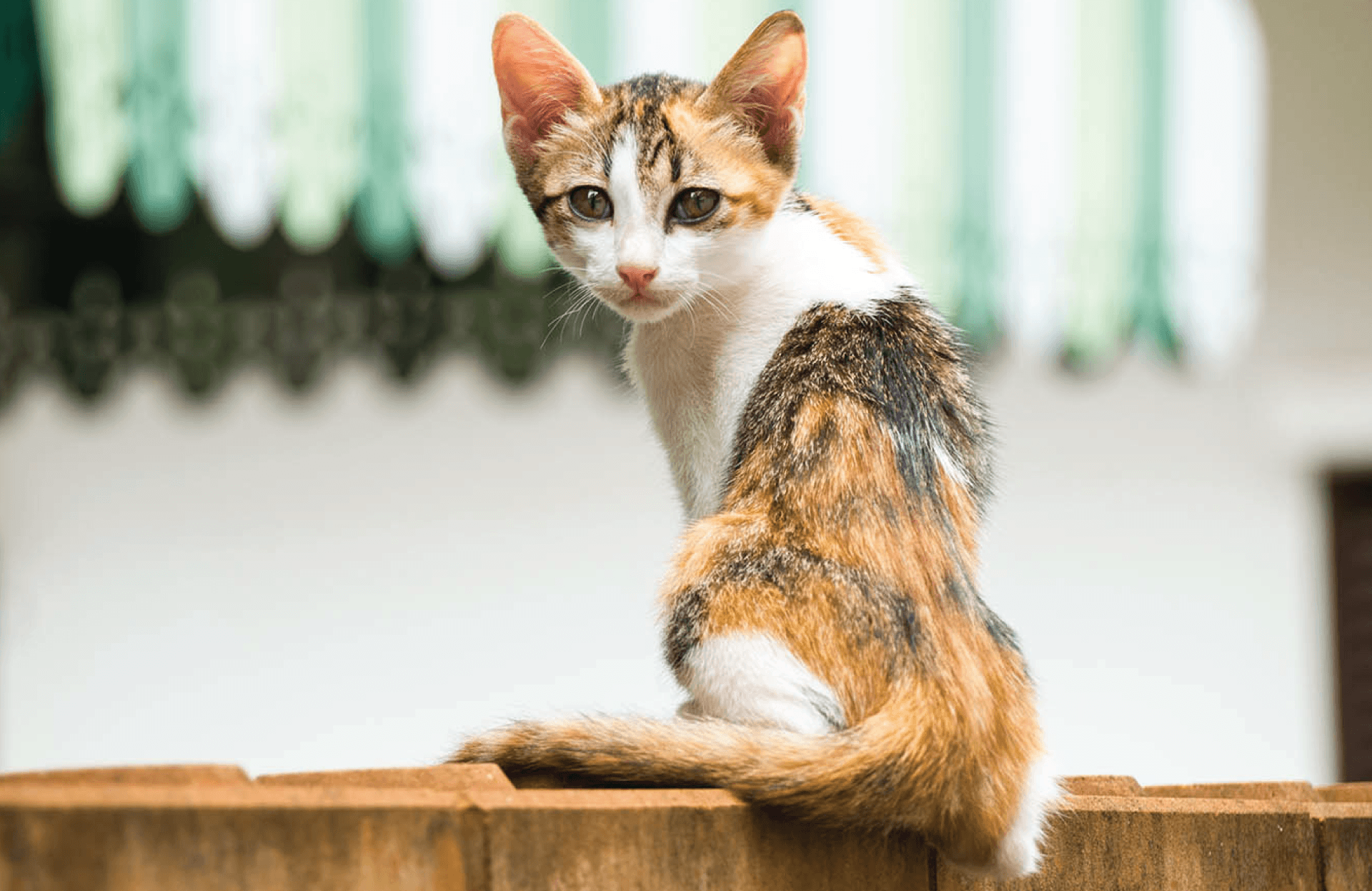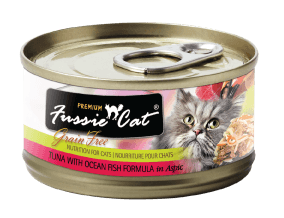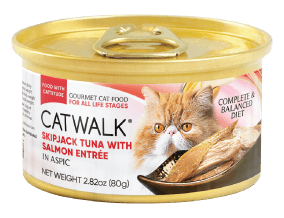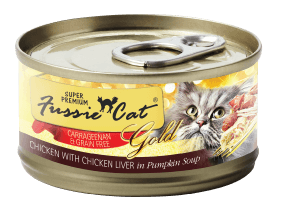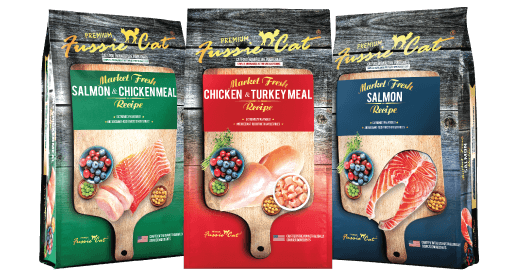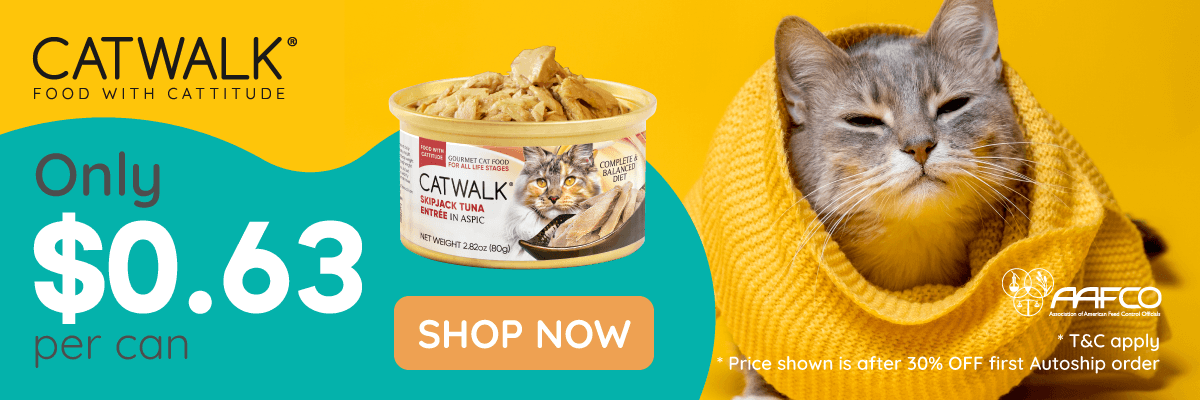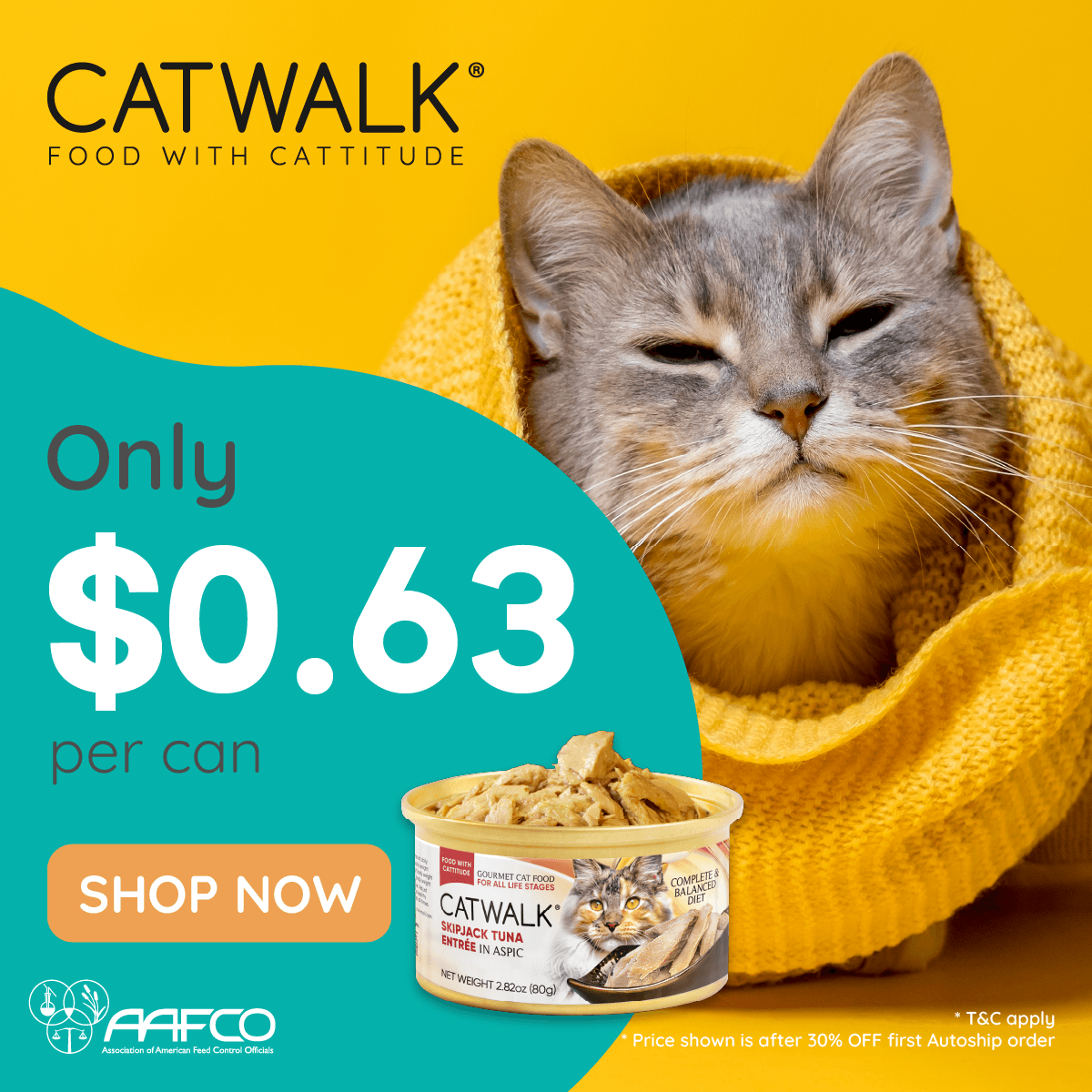WHY IS MY CAT LOSING WEIGHT?
Recently you noticed that your cat has lost some weight and his body shape is not the same as before. Your cat’s weight changes from kitten to adult, affected by various factors such as its age, sex, breed, lifestyle and diet. It is important for your cat to maintain a healthy weight for his age and breed.
Therefore, unintentional weight loss in cats can be a symptom of health issues that should be checked out. You may refer to the chart below as reference for an ideal body condition for your cat.
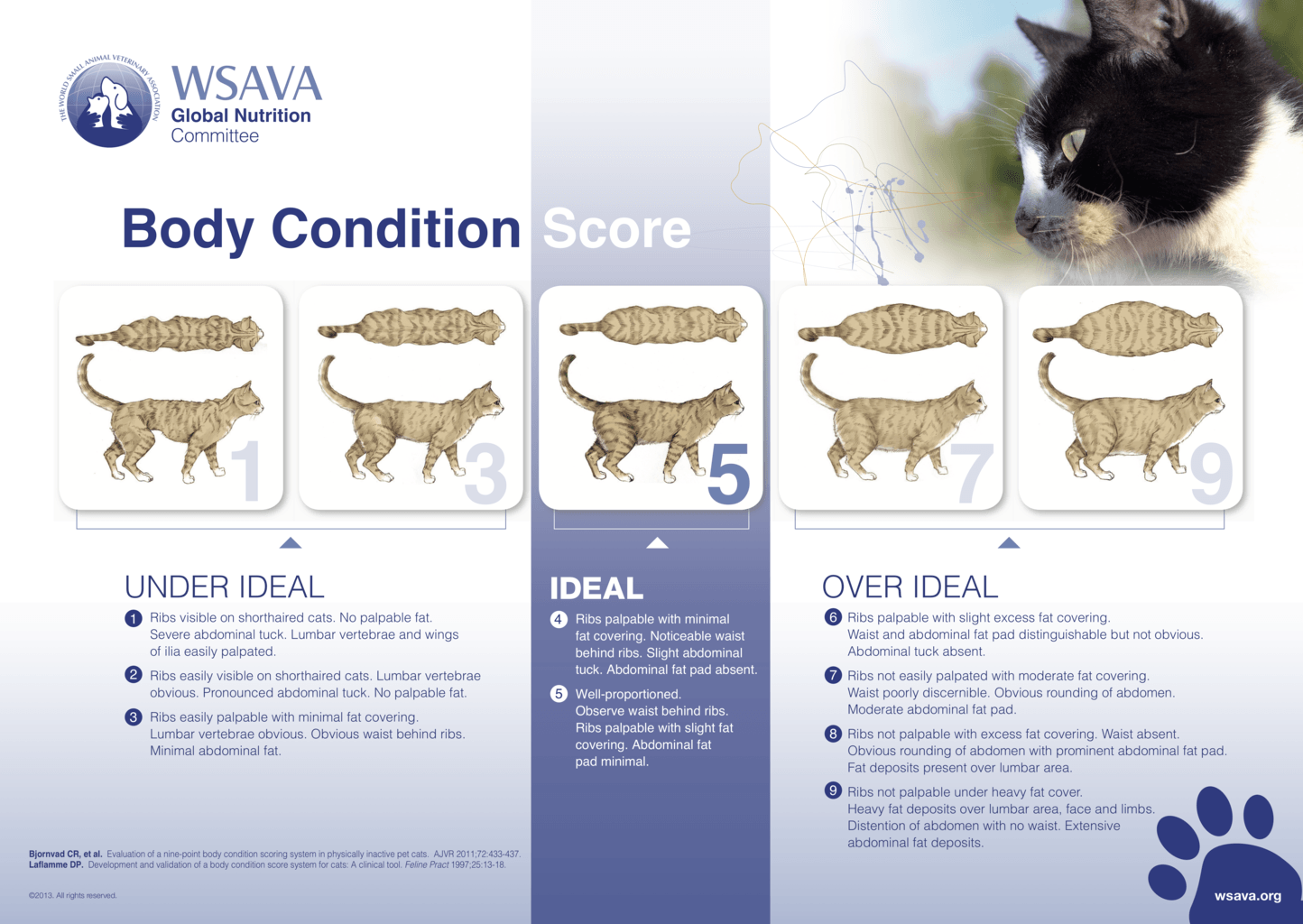
Reference Source from: WSAVA, 2020
Reasons Your Cat May Be Losing Weight
Here are some of the reasons that your cat may be losing weight. The causes of unplanned weight loss may be as simple as the cat is not taking in enough calories for its lifestyle, or there could be some underlying health issues.
“I give the same amount of food to my cat, but why is he losing weight?”
1. Not Getting Enough Food
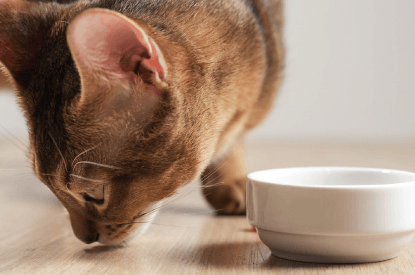
It may sound simple, but it is one of the most important factors to investigate.
Have you recently added another pet to your household? The additional pet in your home could possibly be eating your cat’s food or disturbing your cat’s in accessing to his food.
You may also want to monitor lifestyle changes of your cat. For example, your cat may have become more active due to the weather or environmental change, thus burning more calories as compared. Always ensure that your cat takes in enough calories for his daily activities.
“An average indoor cat requires 20 calories per pound to maintain weight, while 35 calories per pound for an average outdoor cat.”
If your indoor cat weighs 10 pounds, he should then be eating approximately 200 calories per day. However, not every cat is the same, just like human, we have different metabolism levels. The approach above is a guideline. If your indoor cat is losing weight with the above approach after 3 months, with no other health issue, you may want to increase his calories intake and keep monitoring.
Plus, it is important to check the Calorie Content of your cat food. Ensure that your cat is eating a Complete and Balanced Diet according to AAFCO Guideline for proper growth. All AAFCO Compliance products would have Calorie Content and Feeding Guidelines on their food packaging. If you have not been seeing this information on your cat food label, your cat is most likely to not be having a complete and balanced diet for growth.
On another note, even if you find the Calories Content on your cat food label, but NOT an AAFCO Compliant product, high chance that the info is incorrect.
Look for AAFCO Compliance products for your feline’s health. Sample of AAFCO statement on Cat Food Label:

2. Feline Diabetes
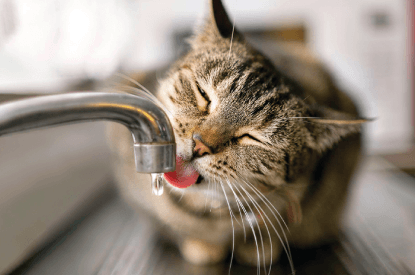
Diabetes is a common disease in cats and that will require immediate veterinary care and treatment. Typically, diabetic cats drink a large amount of water and urinate large volumes too. If you suspect your cat may be suffering from diabetes, without hesitation, bring him to the vet immediately.
Can diabetes be prevented? Yes of course! Diet is the best way of preventing diabetes in cats. Just like humans, a proper and healthy diet can reduce the risk of developing type 2 diabetes.
“Cats thrive on a meat-based diet free of carbohydrates like grains.”
When planning diet for your cat, it is important to make sure that the diet is high protein, low carbohydrates and in moderate fat. Cats are strict carnivores; they simply cannot thrive on an omnivorous diet that is high in carbohydrates. Ideally, 50% or more of your cat’s diet should be animal protein for proper nourishment, and not plant protein such as soy. Look for a grain-free food.
On another hand, when choosing food for your diabetic cat, it is best to choose wet foods across dry foods. Wet foods normally are lower in carbohydrates and contain more moisture/water than dry kibbles. Cats need water in their diet for hydration and urinary tract health because they often do not drink enough water on their own.
Best Cat Wet Food Suggestions
→ AAFCO Compliance
→ Made with premium human grade whole first Tuna
→ Rich in high-quality protein and Omega-3 & 6
→ Enriched with DHA
→ Grain-free recipe
→ Fresh food produced in FDA-registered kitchen
→ 13 premium Tuna combo to choose from
→ AAFCO Compliance
→ Made with high-quality Skipjack Tuna, low mercury level
→ Grain-free recipe
→ Fresh food produced in FDA-registered kitchen
→ High water content with at least 86% moisture
→ 11 tasty formulas to choose from
→ AAFCO Compliance
→ Made with high quality boneless chicken
→ Low in sodium and carbohydrates
→ Grain-free recipe
→ Fresh food produced in FDA-registered kitchen
→ High water content with at least 86% moisture
→ 8 formulas to choose from
“Always read the label of your cat’s food.”
ALWAYS check the food label for ingredients. Tips: the ingredient that weighs the most is listed first. From the food label, you’d find out what are the main ingredients used. However, always look for a complete ingredient list. Some commercial brands would list only a few ingredients and not disclosing all the ingredients used. At your best, prevent feeding your cats products with incomplete food label or ingredients list, because you do not know what you’d be feeding.
3. Hairball and Cats
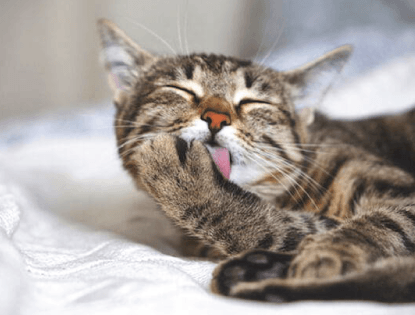
Our feline friends spend a significant amount of time grooming themselves. This action also helps in regulating their body temperature and keeping their hair and skin clean. Normally, the hair passes all the way through the digestive tract with no problem. However, if their hair is not excreted properly and stays in the stomach, it can form a hair ball. These lumps of hair can lead to esophagus blockages and loss of appetite, eventually lose of weight.
Hairball can’t be totally prevented but to be reduced. Groom your cat regularly. The more fur your remove from your cat, the less fur will be going into their stomach. You may brush or comb your cat daily or on a regular basis to minimize the likelihood of forming hairball in their stomach, at the same time it is a good bonding time too.
“High fibre food helps to reduce the risk of developing hairball blockage.”
Diet plays an important part in hairball control. The high fibre formulas are helpful in encouraging the hair to pass through the digestive system. To identify a high-fibre formula, look at the ingredients of your cat’s food label. Look for high fibre ingredients such as peas, chickpeas and flax seeds which are also good quality ingredients for your cats.
! ALERT !
Always read the ingredient list to understand what you are feeding your cat and prevent falling into the trap of false advertising. Many cat food products with the label “Hairball control” do not really use high fibre ingredients, but just market the product as such.
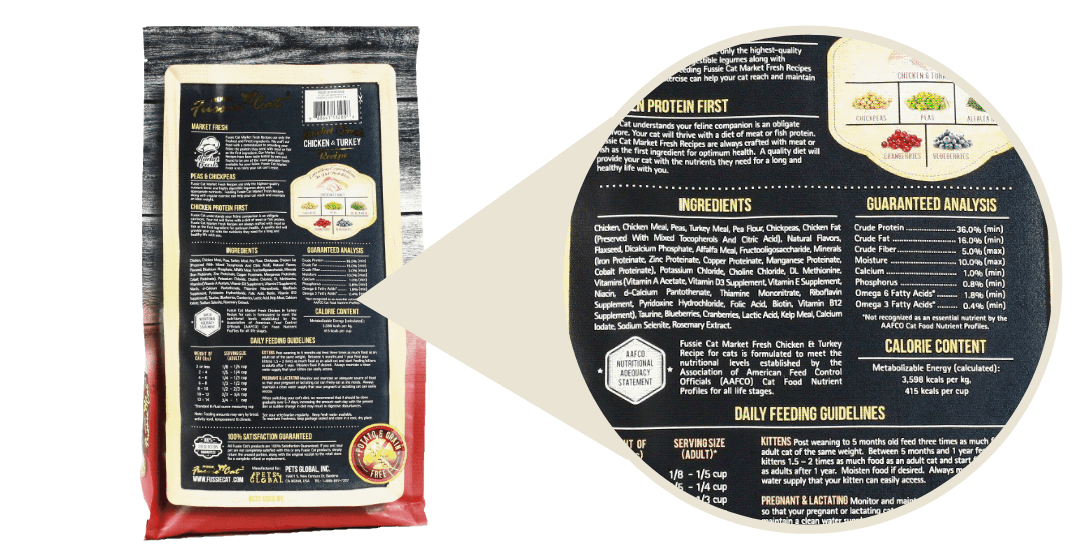
Check out Fussie Cat Market Fresh Formula that uses high quality and high fibre ingredients such as Peas, Chickpeas, and Flaxseed that provide a true high fibre food for your felines, and a meat first formula.
4. Vitamin Deficiencies in Cats
If your cat is eating a diet that is not completed and balanced, they may be at a risk for vitamin and other nutrient deficiencies.
Check the Ingredients List on your cat food label, and make sure your cat gets all the essential vitamins and minerals to thrive.
For your cat’s health and wellness, it is recommended to check out Fussie Cat Formula that provides a complete and balanced diet for all life stages, in both dry food and wet food.
Here are the essential Vitamins and Minerals required by your cat and their functions, but not only limited to these.
| Vitamin A | Fat soluble vitamin supporting the immune system, vision, growth, skin, and hair development. Especially important in the development of kittens. |
| Vitamin B12 | Water soluble vitamin that supports the brain and nervous system, as well as the formation of blood, and the immune function of the body. |
| Vitamin D3 | Fat soluble vitamin that supports the absorption of Calcium, Iron, Magnesium, Phosphate, and Zinc. |
| Vitamin E | Fat soluble vitamin which plays a role in the formation of cells, the metabolism of fats, and is an antioxidant. |
| Taurine | An organic acid that supports cardiovascular function, regulation of the nervous system, and thyroid health. Cats must derive Taurine from their food as they cannot manufacture it on their own. |
| Potassium Iodide | Nutritional supplement used as a bioavailable source of Iodide, supporting thyroid health, normal cell function, and the formation of healthy muscles, bones, and teeth. |
5. What about Kittens?
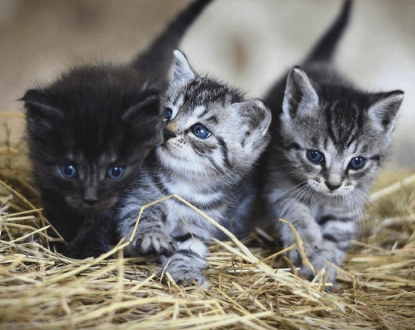
Just like human babies, kittens have different nutritional requirements than adult cats for a healthy growth.
A kitten’s weight may be double or triple during the first few weeks of life. To support the explosive growth, kittens need more calcium than adult cats to support growth and development of strong bones and teeth. Without sufficient calcium, your kitten will not thrive in his ideal condition and cannot enjoy exploring the world around him.
Additionally, DHA is mandatory for kittens for healthy brain and vision development. This Omega-3 Fatty Acid DHA also plays an important role to improve learning ability and cognitive function of kittens.
Even if a particular cat food is labelled “For All Life Stages”, Calcium and DHA can be absent. Then this food is not the ideal diet for your kittens. We are sure you do not want to grow a sick cat, but to provide your feline family the best.
A good diet can prevent many problems!
One of the best ways to ensure your cat remains healthy and happy is to make sure they are fed on a complete and balanced diet. Be a responsible cat parent, make sure you read the label and know what you are feeding to your furkids.
Please make sure to consult your vet if you have any concern about your cat’s weight loss. Your vet will conduct examination to address your concern accordingly.
Share this Post:


